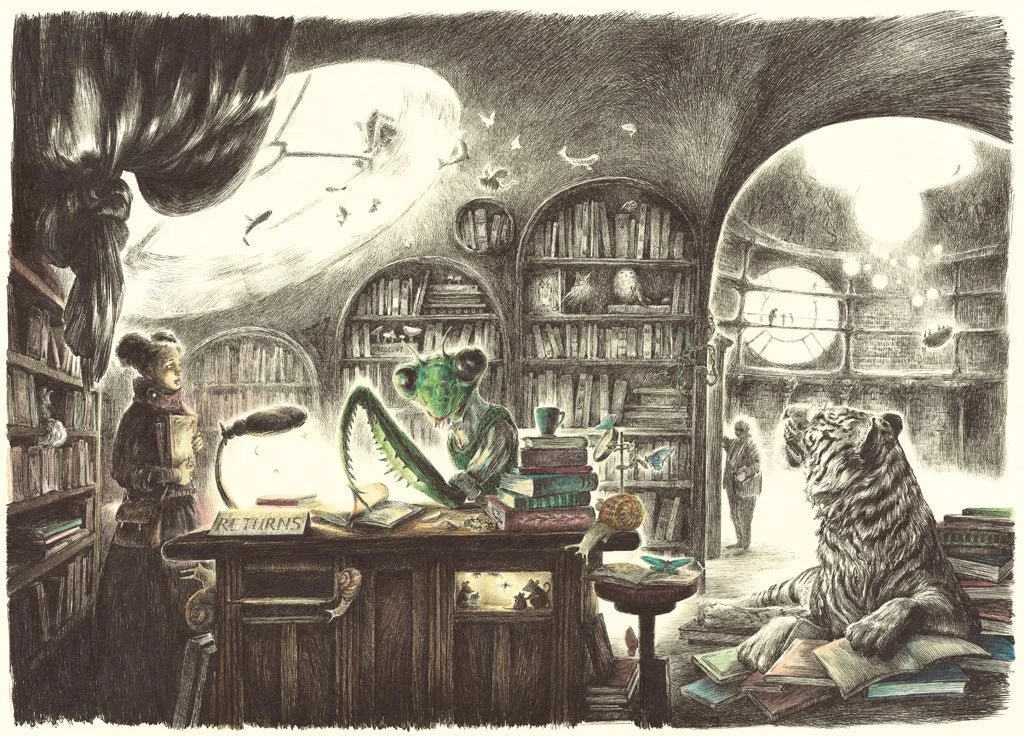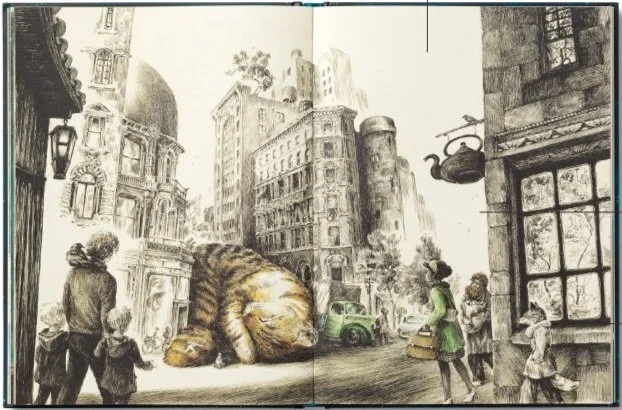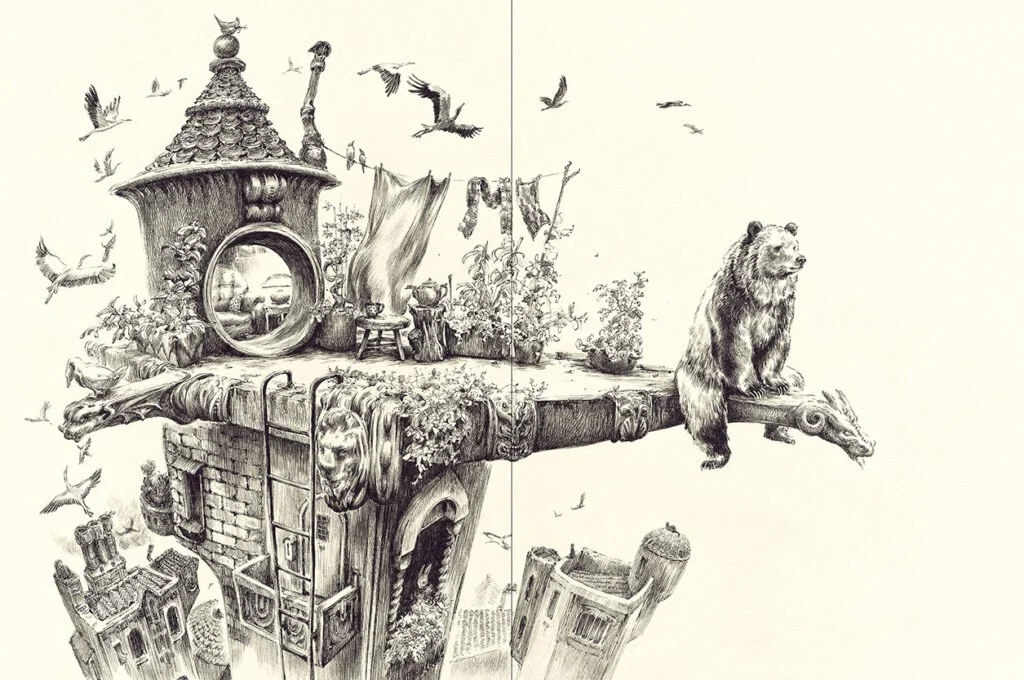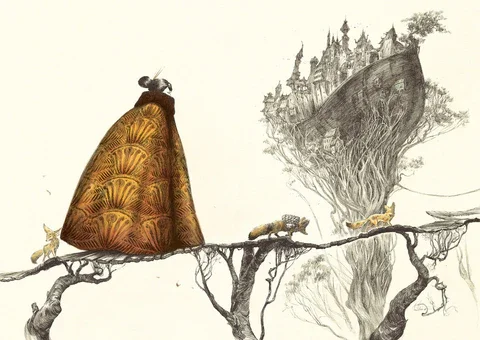
The Storyteller’s Handbook
By Elise Hurst
-
is an Australian illustrator.
-
2022.
-
0+
I don’t know what to call this book and where to place it on my website. Is it fiction or non-fiction? Is it a collection of stories or illustrations? What I do know is that this book is no ordinary storybook. The description says it contains 50 illustrations but the number of stories you can make with them is truly infinite. The idea of providing children and adults with a visual prompt for creating a story is not new at all. We describe pictures all the time. Elise Hurst though is such a charming illustrator with endless imagination, that her book makes even the most reluctant storytellers talk and write.
Before we started our journey with this book, we read Imagine a City by Elise Hurst. It’s made in a very similar style but it has a storyline. And it can be an introduction and a very good example of creative and bonkers storytelling before you start your writing course.
Don’t worry if you are not sure how to use this book in your classroom. Elise gives you some prompts. The book is divided into a few parts and each starts with a pre-word.
‘Our imaginations are not limited by
what is, they can soar into what if.’
Here we go. Just run with it. What if we could dive down to the bottom of the ocean in a small capsule? What if you had one extra ticket, who would you take with you and what would you want to see together?
What if you saw a few animals patiently queuing up to get a small package at a Bunny Shop?
What if the Earth got invaded by giant snails?
Elise Hurst’s website is very helpful. It has got tons of activities and ideas for teachers and young writers. I’d say it’s a handbook on it’s own that can be as well applied to other projects.
With my Writing and Storytelling Classes this summer we focus on language techniques and descriptive writing. So I was sticking to the plan and not the handbook on Hurst’s website.
To work on expanding vocabulary, we were drawing spider word charts and trees.
Then we were describing some of the pictures using the five senses. I asked the children not to describe the picture but write what they could hear, smell, feel, touch, see and taste. For example, a child says that he can smell the sea. I ask him to go deeper and wider and write what the sea smells like. In the end he gets a better sentence. The same is with all the senses.
Then we moved on to literary devices and using the illustration in this book, we were making examples of a metaphor, simile, oxymoron, personification, analogy and allusion.
Alliteration. Onomatopoeia. Building tension using long and short sentences. Writing dialogues. Poems, and many more.
Whatever you are targeting you can practise it using The Storyteller’s Handbook.





